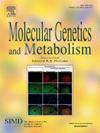庞贝氏症:未满足的需求和新兴疗法
IF 3.7
2区 生物学
Q2 ENDOCRINOLOGY & METABOLISM
引用次数: 0
摘要
庞贝氏症是一种因酸性α-葡萄糖苷酶活性降低导致糖原异常堆积而引起的衰弱并危及生命的疾病。庞贝氏症的第一种治疗方法是酶替代疗法 Myozyme®(重组人酸性α-葡萄糖苷酶,alglucosidase alfa),它是治疗最严重疾病的救命疗法,并为表型较轻的患者带来了有临床意义的益处。然而,许多患者在接受了多年的阿糖苷酶α治疗后,仍表现出不理想的反应或临床衰退。阿糖苷酶α(Nexviazyme®)和西帕糖苷酶α(Pombiliti®)与米格鲁司他(Opfolda®)的批准代表着新一代酶替代疗法的诞生,它们寻求在阿糖苷酶α之外进一步改善患者的治疗效果。本综述概述了现有疗法所面临的挑战,并总结了目前针对庞贝氏症及相关溶酶体储积症进行临床前或临床开发的新兴疗法。主要疗法包括组织靶向酶替代疗法,该疗法旨在提高中枢神经系统等靶组织中的酶浓度;底物减少疗法,该疗法通过新型机制降低细胞内糖原浓度;以及基因疗法,该疗法可恢复缺乏的酸α-葡萄糖苷酶的内源性生成。上述每种疗法都有望成为未来的治疗选择,通过更有效地治疗疾病进展的根本原因--糖原累积,改善庞贝氏症患者的生活质量。本文章由计算机程序翻译,如有差异,请以英文原文为准。
Pompe disease: Unmet needs and emerging therapies
Pompe disease is a debilitating and life-threatening disease caused by aberrant accumulation of glycogen resulting from reduced acid alpha-glucosidase activity. The first treatment for Pompe disease, the enzyme replacement therapy, Myozyme® (recombinant human acid alpha-glucosidase, alglucosidase alfa), is a lifesaving treatment for the most severe form of the disease and provided clinically meaningful benefits to patients with milder phenotypes. Nonetheless, many patients display suboptimal responses or clinical decline following years of alglucosidase alfa treatment. The approval of avalglucosidase alfa (Nexviazyme®) and cipaglucosidase alfa (Pombiliti®) with miglustat (Opfolda®) represents a new generation of enzyme replacement therapies seeking to further improve patient outcomes beyond alglucosidase alfa. However, the emergence of a complicated new phenotype with central nervous system involvement following long-term treatment, coupled with known and anticipated unmet needs of patients receiving enzyme replacement therapy, has prompted development of innovative new treatments.
This review provides an overview of the challenges of existing treatments and a summary of emerging therapies currently in preclinical or clinical development for Pompe disease and related lysosomal storage disorders. Key treatments include tissue-targeted enzyme replacement therapy, which seeks to enhance enzyme concentration in target tissues such as the central nervous system; substrate reduction therapy, which reduces intracellular glycogen concentrations via novel mechanisms; and gene therapy, which may restore endogenous production of deficient acid alpha-glucosidase. Each of these proposed treatments shows promise as a future therapeutic option to improve quality of life in Pompe disease by more efficiently treating the underlying cause of disease progression: glycogen accumulation.
求助全文
通过发布文献求助,成功后即可免费获取论文全文。
去求助
来源期刊

Molecular genetics and metabolism
生物-生化与分子生物学
CiteScore
5.90
自引率
7.90%
发文量
621
审稿时长
34 days
期刊介绍:
Molecular Genetics and Metabolism contributes to the understanding of the metabolic and molecular basis of disease. This peer reviewed journal publishes articles describing investigations that use the tools of biochemical genetics and molecular genetics for studies of normal and disease states in humans and animal models.
 求助内容:
求助内容: 应助结果提醒方式:
应助结果提醒方式:


